Raising sheep in the Philippines can be just as profitable as raising goats on local farms. Sheep contribute to food production, rural employment, and gross national product, converted into meat, wool and skin. Although Filipinos do not normally eat mutton, there is a growing demand for mutton and the potential for meat export.
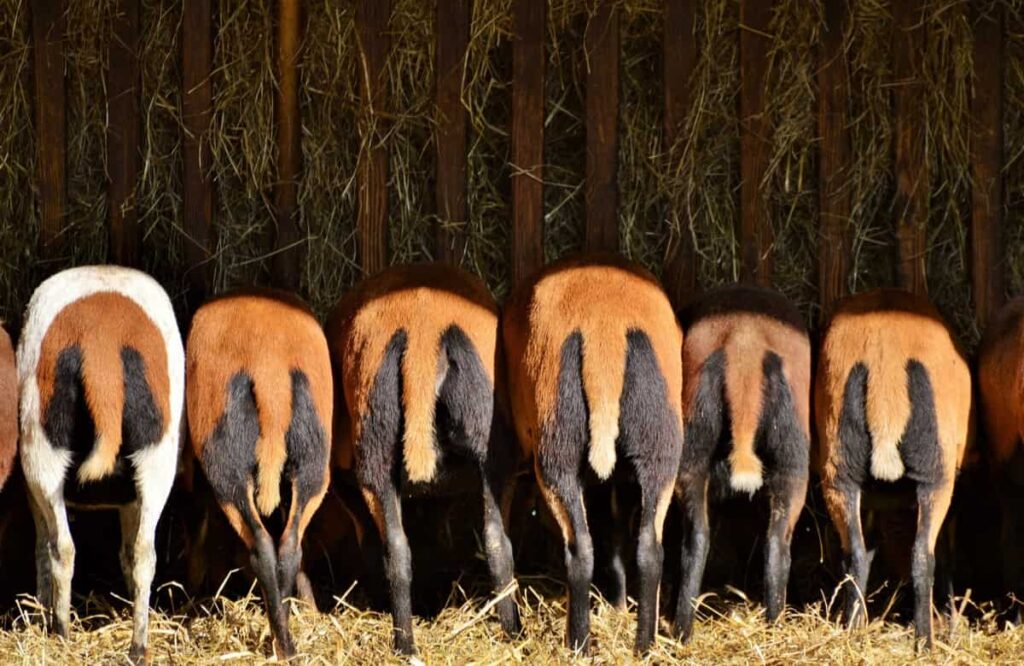
Sheep Farming in Philippines
The best location for Sheep farming in the Philippines
- The location shall be in accordance with the area’s land use plan. The site shall be accessible to service roads, water supply, and power lines.
- The site shall be well drained and allow free air circulation. The building will be constructed in an east-west direction, and the structure for marketable animals will be located near the service road. The site shall be located where prevailing winds will not carry odors to the farmhouse.
Why should you do Sheep farming?
Sheep are mostly raised for their wool, milk, and manure production. Meat is very tasty but nutritious and popular with all kinds of people worldwide. However, suppose you are looking for the most profitable business. In that case, sheep rearing can be a great idea as it is a good source of income and poverty alleviation in arid, desert, semi-arid and mountainous areas.
What are the common breeds of Sheep in the Philippines?
The sheep population in the country consists of Philippine native sheep (common in small flocks throughout the country). These exotic breeds include the Poll Dorset, Rambouillet Merino, St. Croix, and Katahdin (found on selected government stock farms), Barbados Blackbelly (found on some commercial or institutional farms), Border Leicester, and Suffolk (very small populations) are included.
Crosses and upgrades of these sheep breeds are also available. Sheep are mainly used as a source of meat. Livestock and poultry constitute two of the most important sub-sectors in the Philippine agricultural industry. Of all the animals raised for human consumption, contributing to the bulk of livestock production in the country.
Apart from the “native sheep,” other breeds of sheep bred in the country include Shropsire, Southdowners, Poll Dorset, Rambouillet, and Suffolk. Religious missions and international civic organizations have introduced Barbados black-belly sheep to the country in recent years. The latter has been seen as adaptable to Philippine conditions.
Sheep production methods in the Philippines
Intensive accelerated
Total confinement – Ewes and lambs are kept in corrals or barns throughout the year, and their needs are met while maximizing production. Ewes are flushed (fed grain before breeding) to increase the incidence of multiple births. Grain is also fed to lambs before and during lactation to meet their growing needs and keep the lamb at a high level of nutrition. In addition, the lambs will be fed creeps. Good quality water, salt, and minerals should be available to all animals. Confinement tends to be a more costly production method but can result in increased productivity and income.
In case you missed it: How to Make Corn Silage: Production and Management Steps for Goats, Sheep, Cows, Pigs, and Cattle
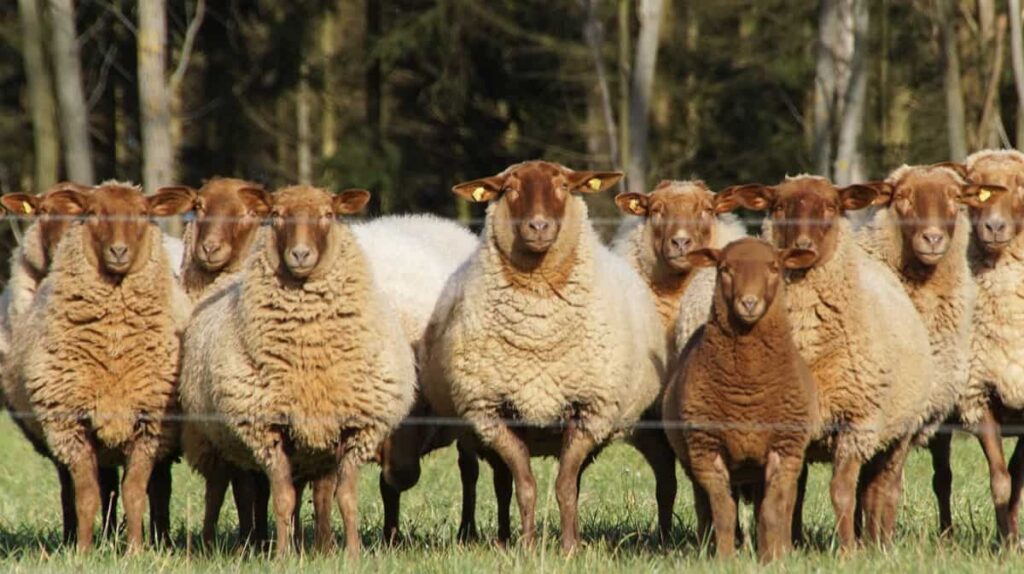
Semi-confinement
Lambs are confined to market weight and fed creep, while ewes graze on pasture after weaning. Ewes are fed in captivity in winter.
Range/grass based
It is the traditional method of production. Ewes are reared in late autumn in pastures for spring lambing. Ewes and lambs are grazed throughout the summer, and lambs are sent to market in the fall. Some producers take advantage of special grazing schemes to provide summer rangeland. Predator control is a major challenge in rangeland environments. However, adding guard dogs or donkeys and installing electric fences have significantly reduced the losses.
Can you raise Sheep in the Philippines?
Raising sheep in the Philippines can be just as profitable as raising goats on local farms. Sheep contribute to food production, rural employment, and gross national product, converted into meat, wool and hides. Small acreage farms can provide adequate space for profitable sheep rearing. Profitability in sheep farming can be difficult, but profitability is possible with production herds and close control over costs. Sheep mainly generate income from selling meat, wool, and milk.
Is Sheep native in the Philippines?
Sheep have a long history in the Philippines. It was introduced here during the Spanish period. The sheep we call “native” today is the Spanish Merino brought to the country by the Spanish during the Galleon trade between Mexico and the Philippines.
Native sheep in the Philippines are raised primarily like goats. Sheep are either tethered, left to graze, or kept/reared in semi-captivity. Generally, sheep are reared for meat, as pets, and rarely as animals for sale to increase the family’s income. However, the generally high variability of quantitative parameters of the local stock may indicate the potential for improved performance of Philippine sheep through appropriate breeding and management.
Decide the reason why you want to raise the Sheep
Sheep are raised for many reasons – for their wool, skin, meat, and milk; For hobby farming reasons to procure organic domestic meat and other products; for plant control; or to become a pet. Therefore, do not overextend unless you have the necessary time, adequate experience, adequate resources, and adequate pasture.
Benefits of Sheep farming in the Philippines
- Multi-purpose: meat, wool, skin, manure, and milk and transportation.
- You can raise sheep with other animals in a small amount of space on farms, and they don’t need expensive housing.
- It requires less labor, and a good range of profits can be obtained from sheep farming. In addition, sheep can survive on low-quality grass.
- They produce wool, meat, and milk, which are used for various purposes. This business can be a good source of income from sheep farming and employment through proper management. Because the two major sheep products (wool and mutton/meat) are quite different in their production and consumption, the price of one does not necessarily affect the other.
- A crop of lambs can be marketed after 5-6 months (preferably before a year), with a rather quick return.
- Most suitable for using sparse vegetation in dryland areas through rangeland management and developed pastures.
- Due to better water and food (especially protein) economy, it better adapted to arid and semi-arid tropical areas with marginal and sub-marginal lands, otherwise unsuitable for crops.
- Because sheep eat a greater variety of plants than any other livestock, they can turn waste into profit and improve the appearance of many farms (i.e., the best herbs).
- Sheep dung is a valuable fertilizer, and it is grazed on subsoils; its droppings can improve plant growth in such areas.
In case you missed it: How to Start Goat and Sheep Farming in the United Arab Emirates (UAE): A Stall Feed Guide for Beginners
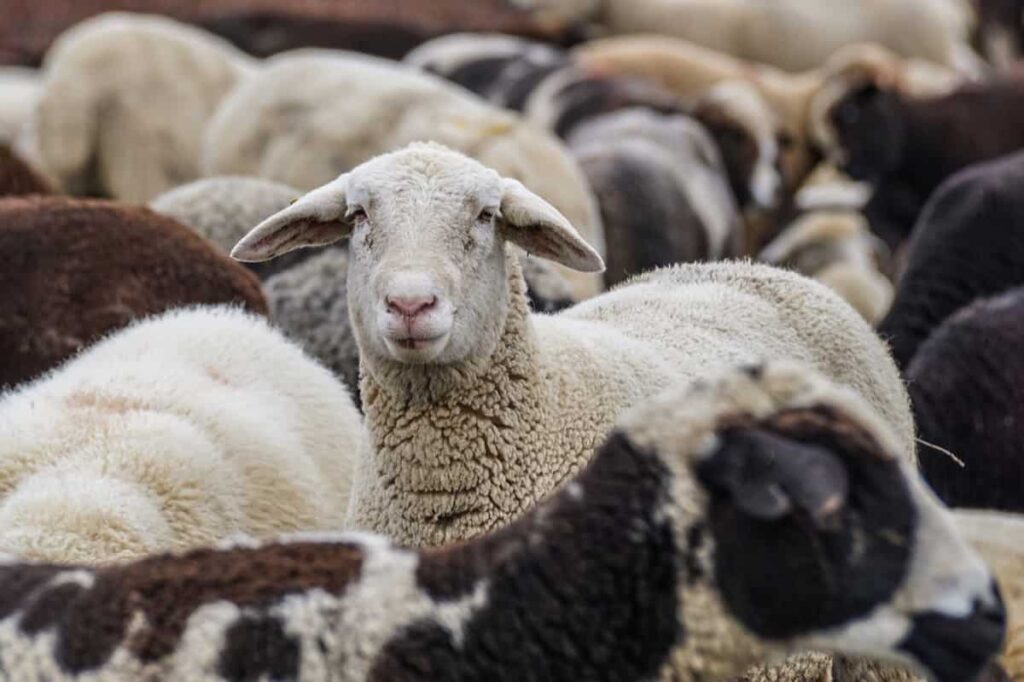
Understand basic Sheep care for successful production
Sheep may require essential care: food, water, shelter, and cleaning. Ensure the flock has fresh grass, hay, and clean water daily. It is very promising as it requires very little maintenance. Whether you are raising sheep for meat or wool, extra care may be required. Sheep breed quickly and can be kept in vacant crop fields along roadsides and orchards during the day. Farm management software can provide up-to-date information about your sheep farming business.
Proper care of sheep is essential to ensure their health. Please ensure the water supply is clean and you have enough shade for them in hot weather. Feed is one of the biggest expenses for a sheep farming operation. Pasture and hay provide most of the food for ruminant animals. Unfortunately, the small area does not allow the production of large quantities of feed. Therefore, finding inexpensive sources of good quality hay or suitable grazing pasture is important to be profitable.
Availability of feed resources, processing and handling equipment, cost, stage of production, external environment, and production goals are important factors to ensure a successful feeding plan. It is important to work with a nutritionist to ensure that the rations you provide meet the needs of your animals. Unless the ewes are in optimal condition, it may be necessary to flush them with grain for several weeks before and during the breeding season.
It should increase the lambing percentage. Rams should also be fed grain during these periods to maintain good conditions. The amount of grain and additional supplementation at other stages of production will depend on the quality of grain fed, the amount and type of other feeds, and the production stage, particularly the number of lambs reared.
Basic requirements in Sheep farming in the Philippines
Prepare a shelter for the winter
Sheep need shelter during winter or rain. A small pen is enough for a flock. Thick-coated sheep can tolerate cold weather but check with experienced sheep breeders first. The barn has three walls to help with air circulation if you live in a temperate climate. If you keep sheep in such a place during the winter months, you need to build a stable and keep them free from wind, but you should take the sheep outside during the day. Sheep hate and hate wet weather. If you live in a place that receives a lot of rain, you may need an indoor cage.
Water
All sheep, including young lambs, should have access to fresh water. As with feed, test the water for quality parameters. The information can be used to mitigate any potential toxicities and deficiencies.
Strong fencing
You should have a proper fence if you allow them to graze on a pasture. The fence should be strong enough so they cannot get out and stay inside safely. If the fence is good, it will help keep out all kinds of predators. A wire or woven fence is recommended. The best sheep fence is a plain or woven wire non-electric fence. You use electric mesh fences for temporary paddocks. In warm climates and hot summer months, sheep need shade from trees or open roof structures.
In case you missed it: How to Start Sheep Farming From Scratch: A Detailed Guide for Beginners
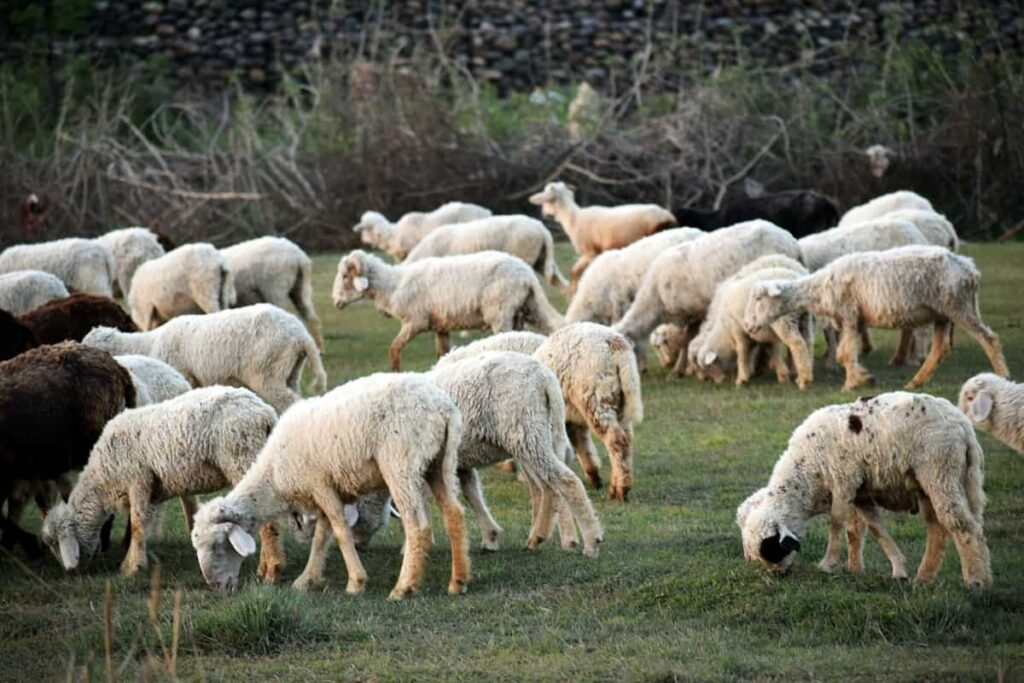
Make sure they have plenty of fresh and cool water during these times. Sheep do not need much protection. They prefer a simple, south-facing, three-sided shed to protect them from the worst of rain, cold, snow, and wind. Shed size should allow 15 to 20 square feet per adult sheep. One exception is if sheep give birth to lambs during the winter.
If this is the case, a small barn or strong closed shed is necessary to protect the young animals. Even with small flocks, individual sheep sometimes need attention, so some handling facilities must confine individual animals for shearing or medical treatment. It can be a fairly simple cradle or a forced pen. It will be much safer than chasing animals and trying to capture them for handling.
Good maintenance
To ensure maximum profit from your sheep farming business, you must take good care and manage your sheep properly. It is advisable to purchase quality and productive breeds, feed them nutritious foods and provide them with suitable housing.
Commercial Sheep production in the Philippines
Small ruminant production is accomplished either semi- or fully confined in high sheds or sheep houses. Under the semi-captive system, animals can graze in open grasslands, scrubland, or under tree crops. At night these animals are herded in covered alleys or high houses. Goats reared under complete confinement, on the other hand, are kept in sheds or barns (usually high with slotted floors) at all times.
Fully enclosed goats are fed a combination of hay, legumes, and feed concentrates. Adequate health care and biosecurity measures are also provided to maintain the good health status of these animals. On farms where goats and sheep are being raised, both species are allowed to graze together during the day on open grasslands, bare crops, and under-tree crops.
At night, the sheep are locked in separate sheds. Sheep raised on commercial farms are mainly sold as breeders. However, the killed animals are also sold for slaughter in local public markets. Most of the sheep raised on commercial farms are of exotic breeds, although some upgraded local sheep can also be found on commercial farms.
Feeding management for Sheep farming
It is important to consider what feeds to give during fattening, as they account for 70% of production costs. The feed must consist of water and dry matter. Dry matter consists of organic and inorganic materials, including forage and concentrate. Forage can include green leaves, grass clippings, legumes, etc., while tubers (cassava, yam, or potato), grains (maize, sorghum, soybeans, peanuts, etc.), and animal protein (fish meal) can be concentrated.
The daily feed intake should be 3.1% of its body weight. Concentrates can be taken at about 2.5% of body weight per day. Clean drinking water must be available at all times. The key to feeding sheep is to ensure good quality pasture. Poor pasture should be supplemented with hay, specific pellet diets, and salt lick blocks. When the sheep cannot graze, such as in winter when there is snow on the ground or during a drought when pasture is poor or non-existent, you will be required to feed the sheep daily.
In case you missed it: 16 Key Rules for Effective Sheep Farm Management: From Planning to Reduce Production Cost
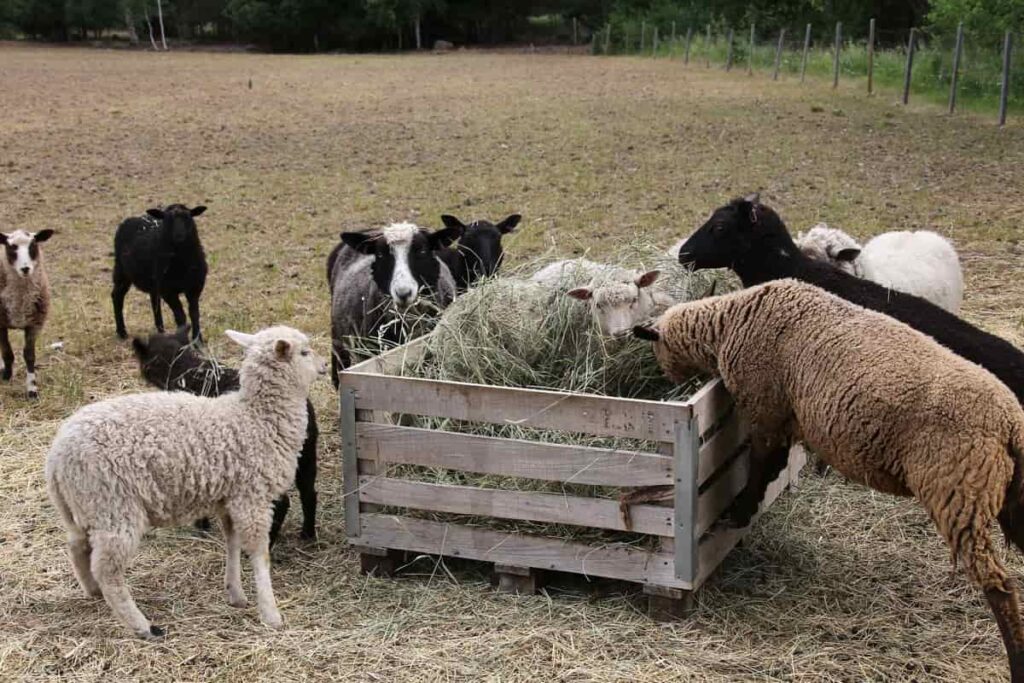
It is time-consuming, so consider this possibility if you are not farming full-time. Feeding according to body condition is important, as ewes and rams with excess fat do not usually breed successfully. Sheep must have access to salt and minerals/vitamins throughout the year. Sheep are sensitive to copper, and cattle mineral levels are usually too high for the average sheep herd.
It varies depending on the province’s area and, in some cases, the breed of sheep. Selenium should be supplemented in those areas of the province where selenium is deficient. It is also important to ensure adequate amounts of vitamins A, D, and E are supplied to the herd. There are many types of mineral and vitamin supplements commercially available. Consult a nutritionist for the right regimen for your operation.
Diseases and their management for Sheep farming in the Philippines
Proper feed and management go a long way in preventing the developing of serious diseases and parasites in sheep flocks. Sheep should be treated for internal and external parasites by injection or drenching at least once a year. Vaccination of lambs against clostridial diseases using an eight-way vaccine is recommended. Booster doses are important to ensure annual immunity levels. Lambs should also be vaccinated against enterotoxemia (pulpy kidney or overfeeding disease).
Sometimes, the flock must be vaccinated against the disease before lambing. Multiple vaccines can be used for clostridial and enterotoxemia diseases. In addition, keep the sheep free from insects and healthy. Be sure to worm the sheep regularly with a commercial worming paste suitable for sheep. Other precautions include dipping sheep to prevent insect infestation and, in some places, tails being docked as a precaution against fly-borne disease.
If you are in an area where the foot-and-mouth disease is prevalent, take appropriate precautions to protect your sheep. Consult a veterinarian on the best and most humane method to protect your sheep from disease. In addition, the following program should be followed to protect lambs from diseases.
- Quarantine new lambs for 1-2 days to ensure no new lambs are infected.
- Provide the new lambs with worm-control medicine.
- Separate any sick lambs from healthy ones, and give them appropriate medication.
In case you missed it: Common Mistakes in Sheep Farming: For the First Time Sheep Owners
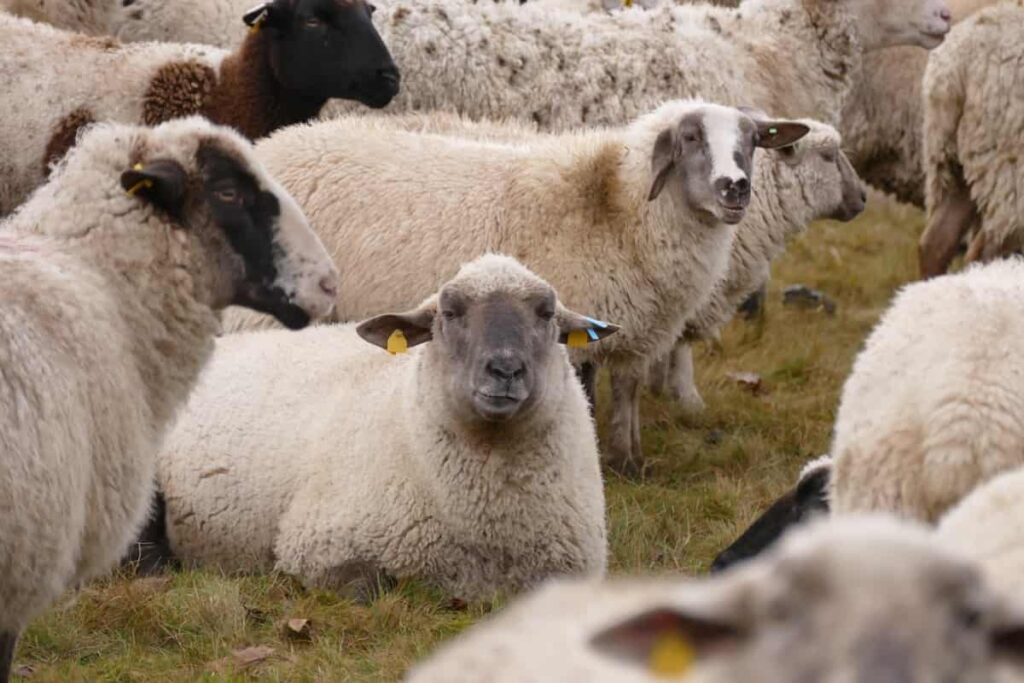
Vaccination – Vaccinate your sheep on time. It will protect them from various diseases. One should always have a good relationship with the doctor to seek help anytime.
Conclusion
Keeping sheep in the Philippines is rewarding – whether for one’s livelihood, household food source, or hobby. But success in raising sheep requires good planning and consistent management of the sheep farm. Sheep farming in the Philippines is raising and breeding sheep on a commercial farm for profit. Therefore, it includes feeding, protecting, managing, etc. At the same time, it also includes information on local conditions, breeds, production methods, and markets.
- How to Make Houseplants Bushy: Effective Tips and Ideas
- Innovative Strategies for Boosting Coconut Pollination and Yield
- Pollination Strategies for Maximum Pumpkin Yield
- The Complete Guide to Chicken Fattening: Strategies for Maximum Growth
- Natural Solutions for Tulip Problems: 100% Effective Remedies for Leaf and Bulb-Related Issues
- Revolutionizing Citrus Preservation: Towards a Healthier, Greener Future
- Natural Solutions for Peony Leaf and Flower Problems: 100% Effective Remedies
- Maximizing Profits with Avocado Contract Farming in India: A Comprehensive Guide
- Natural Solutions for Hydrangea Problems: 100% Effective Remedies for Leaf and Flowers
- The Ultimate Guide to Choosing the Perfect Foliage Friend: Bringing Life Indoors
- From Sunlight to Sustainability: 15 Ways to Use Solar Technology in Agriculture
- The Ultimate Guide to Dong Tao Chicken: Exploring from History to Raising
- The Eco-Friendly Makeover: How to Convert Your Unused Swimming Pool into a Fish Pond
- Mastering the Art of Delaware Chicken Farming: Essentials for Healthy Backyard Flocks
- 20 Best Homemade Fertilizers for Money Plant: DIY Recipes and Application Methods
- How to Craft a Comprehensive Free-Range Chicken Farming Business Plan
- Brighten Your Flock: Raising Easter Egger Chickens for Beauty and Bounty
- How to Optimize Your Poultry Egg Farm Business Plan with These Strategies
- Subsidy for Spirulina Cultivation: How Indian Government Schemes Encouraging Spirulina Farmers
- Ultimate Guide to Raising Dominique Chickens: Breeding, Feeding, Egg-Production, and Care
- Mastering the Art of Raising Jersey Giant Chickens: Care, Feeding, and More
- Ultimate Guide to Raising Legbar Chickens: Breeding, Farming Practices, Diet, Egg-Production
- How to Raise Welsummer Chickens: A Comprehensive Guide for Beginners
- How to Protect Indoor Plants in Winter: A Comprehensive Guide
- Ultimate Guide to Grow Bag Gardening: Tips, Tricks, and Planting Ideas for Urban Gardeners
- Guide to Lotus Cultivation: How to Propagate, Plant, Grow, Care, Cost, and Profit
- Agriculture Drone Subsidy Scheme: Government Kisan Subsidy, License, and How to Apply Online
- Ultimate Guide to Raising Araucana Chickens: Breed Profile, Farming Economics, Diet, and Care
- Bringing Hydroponics to Classroom: Importance, Benefits of Learning for School Students
- Ultimate Guide to Raising Polish Chickens: Breed Profile, Farming Economics, Diet, and Care
- Ultimate Guide to Raising Australorp Chickens: Profile, Farming Economics, Egg Production, Diet, and Care
- Silkie Chicken Farming: Raising Practices, Varieties, Egg Production, Diet, and Care
- Sussex Chicken Farming: Raising Practices, Varieties, Egg Production, Diet and Care
- Homemade Feed Formulations for Livestock: Discover Cost-effective Starter to Finisher Feed Recipes
- 20 Best Pig Weight Gain Supplements: Top Swine Weight Gain Formulas
- Ultimate Guide to Elderberry Farming: Propagation, Planting, Yield, Cost, and Profit